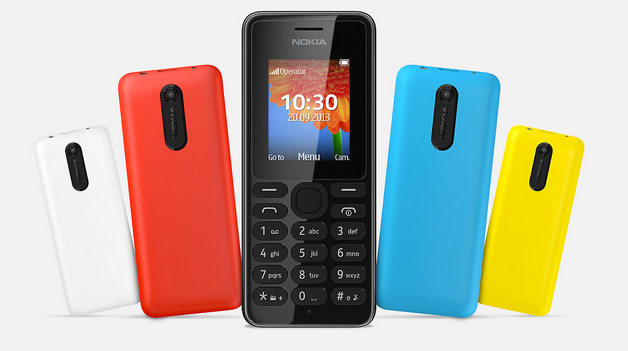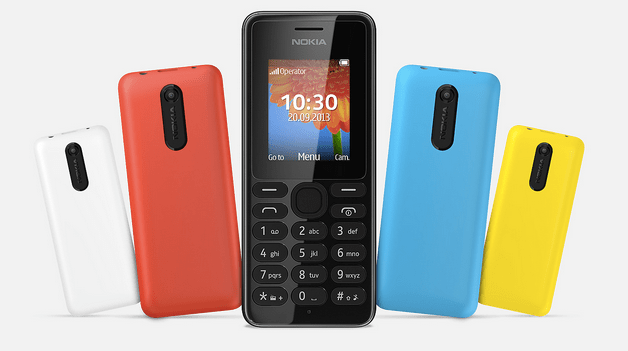

Microsoft is selling the feature phone business it acquired from Nokia back in 2013 to a subsidiary of Chinese manufacturer Foxconn for $350 million, it announced today.
At the same time former owner Nokia said it has inked a deal to license its brand to HMD Global, a new Finnish company run by ex-Nokia and Microsoft devices staff, to “create a new generation of Nokia-branded mobile phones and tablets”.
So, er, the Nokia phone is dead, long live the Nokia phone…
Entry level issues
Feature phones — aka more basic mobile devices that are not considered to be fully fledged smartphones — never looked like a comfortable fit for Microsoft, which shelled out some $7.2 billion to acquire Nokia’s entire mobile devices business around three years ago in the hopes of firing up the fortunes of its smartphone OS platform, then called Windows Phone.
That strategy has also faltered, with Microsoft failing to carve out a significant share for Windows Phone in a market dominated by Android (in volume terms) and iOS (for premium/profits). Although it reiterated today that it will continue to develop its Windows 10 Mobile platform, and to support Lumia-branded smartphones (such as the Lumia 650, Lumia 950 and Lumia 950 XL) along with phones from OEM partners such as Acer, Alcatel, HP, Trinity and VAIO.
Holding onto a diminishing feature phones business clearly did not hold much appeal for Redmond which — despite its talk of continued development of its own smartphone platform — has been focusing its efforts on building up a services offering via apps made for Android and iOS devices. Last month, for example, it brought its Word Flow keyboard app, originally developed, for Windows over to iOS as an app.
With its focus shifting to rivals’ smartphone platforms, where the users are, there was clearly little incentive for the company to maintain Nokia’s old feature phones business, especially as the market for so-called dumb phones continues to shrink as Android further squeezes the price of entry level smartphones.
In prior years Microsoft had suggested feature phones might be able to act as an on-boarding ramp for phone users to encounter its services and be encouraged to upgrade to a Windows based smartphone. However that notion never looked likely to fly. And indeed, even the very modest sales of Windows smartphones have further collapsed this year. And the company’s phone revenue declined 49 per cent in its Q2 2016 results back in January.
Microsoft has also specifically been winding down the feature phones business for almost two years. Back in July 2014 an internal memo obtained by the media noted that all mobile phones-related services would be immediately moved into “maintenance mode”, and — over an 18 months period — shut down.
As it turns out Microsoft has taken the option to sell the feature phones division instead of closing it, clawing back a little of the cash it handed over to buy Nokia.
While Nokia gets to re-enter the mobile phones market as a brand licensee.
Nokia branded phones and tablets
The agreement Microsoft has reached will see the feature phones unit and assets sold to FIH Mobile, a subsidiary of the Foxconn Technology Group. While HMD global — the newly formed Finnish company that’s bringing the Nokia brand back to mobile devices — is acquiring the right to use the Nokia brand on feature phones, and “certain related design rights”, with the aim of becoming the sole global licensee for all types of Nokia-branded mobile phones and tablets, it said today.
When Nokia sold its mobile division to Microsoft it gave up the right to use its brand name on devices, but only until this year when that clause in the deal expired. It’s now evidently formulated its strategy to return to the devices market, having previously signaled it was looking for the right partner to do so.
Asked about this back in February Nokia CEO Rajeev Suri told TechCrunch: “We think it’s a good business model because the Nokia brand has great retention — the recognition of the brand is still very high in all the major markets. We also think that if there will be a product with the Nokia brand on it there’s an opportunity for premium on that product – clear price premium” — suggesting HMD will be offering high end handsets and tablets, as well as feature phones.
Nokia couched its agreement with HMD today as a strategic deal. The deal gives HMD an exclusive global license (excluding Japan) to create Nokia-branded mobile phones and tablets for the next ten years. Nokia Technologies will receive royalty payments from HMD for sales of Nokia-branded mobile products, covering both brand and intellectual property rights.
Nokia had already been testing a brand licensing strategy in mobile devices, working with Foxconn on an Android based tablet, the N1, for the Asian market back in 2015. The HMD deal clearly puts its licensing strategy on a more formal and sustained footing. A Nokia spokesperson confirmed it will no be involved in the design of HMD Nokia-branded devices, telling TechCrunch: “HMD will be responsible for product creation, including design.”
For its part HMD said it intends to invest more than $500 million over the next three years to support the global marketing of Nokia-branded mobile phones and tablets, funded via its investors and (what it hopes are) profits from the acquired feature phone business.
HMD — another Android OEM
As well as planning to sell Nokia-branded feature phones, HMD said today that it will also have a smartphone and tablet portfolio based on Android — returning the Nokia brand to Android handsets (a strategy Nokia had begun just prior to the closing of its acquisition by Microsoft, and which Microsoft subsequently shuttered… Truly, all that is old is new again. And again… ).
Nokia noted today that is not making a financial investment or holding equity in HMD but its Nokia Technologies division will take a seat on the HMD Board of Directors, as well as setting mandatory brand requirements and performance related provisions — to ensure that all Nokia-branded products live up to its quality and design standards. After all, the brand is the only mobile asset for Nokia at this point so it needs to ensure no one (else) poisons the well.
As part of the Microsoft feature phone sale deal, Microsoft noted that some 4,500 employees will transfer to, or have the opportunity to join, FIH Mobile or HMD Global — shedding what is likely the remaining rump of Nokia staff Microsoft originally acquired (after prior job cuts as it was unable to move the needle on mobile device sales). FIH Mobile will also acquire Microsoft Mobile Vietnam — the company’s Hanoi, Vietnam, manufacturing facility, Microsoft added.
The transaction is expected to close in the second half of 2016, subject to regulatory approvals and other closing conditions.
Once the Microsoft transaction closes HMD will be led by Arto Nummela, who previously held senior positions at Nokia and is currently the head of Microsoft’s Mobile Devices business for Greater Asia, Middle East and Africa, as well as its global Feature Phones business.
HMD’s president on closing would be Florian Seiche, currently Senior Vice President for Europe Sales and Marketing at Microsoft Mobile, and who previously held key roles at Nokia, HTC and other global brands.
Commenting on the impending return of the Nokia brand to the mobile market, Ramzi Haidamus, president of Nokia Technologies, dubbed it an “exciting new chapter”, adding in a statement: “Instead of Nokia returning to manufacturing mobile phones itself, HMD plans to produce mobile phones and tablets that can leverage and grow the value of the Nokia brand in global markets. Working with HMD and FIH will let us participate in one of the largest consumer electronics markets in the world while staying true to our licensing business model.”

